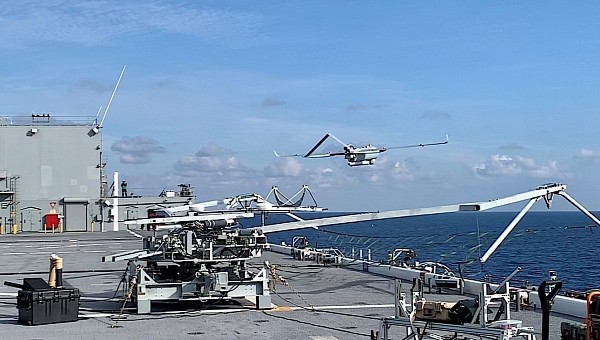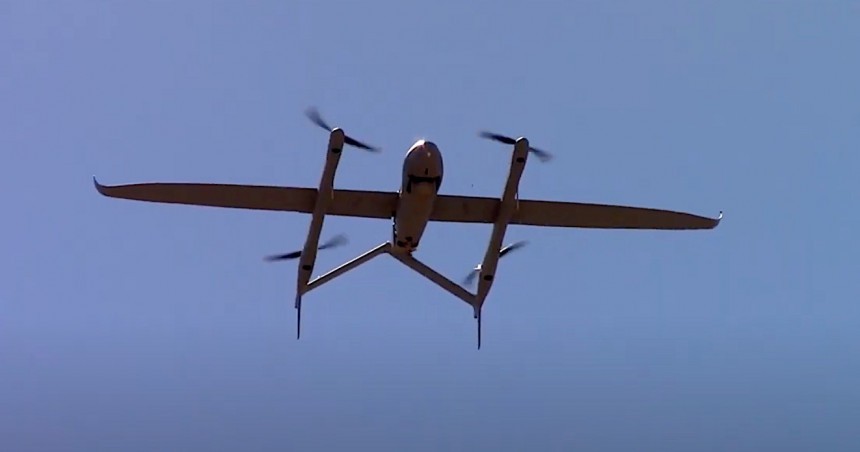We’re not there yet, but probably sooner or later we’ll come to a point where we’ll lose track of how many military drones are operating in the skies of our world. That’s because the world's armed forces keep asking for them, and defense contractors are more than happy to oblige.
Take the relatively unknown Aerosonde, for instance. Despite a number of them being in the air for 600,000 flight hours now, in service of various operators, it’s not a machine we’ve heard plenty about before. But that’s about to change, as the drone just entered operational service with the U.S. Navy.
Back in September 2021, the Navy requested a new type of drone that can be used for intelligence, surveillance and reconnaissance (ISR) missions. It didn’t want just any type of drone, but one that could be launched from guided-missile destroyers.
Aerosonde is that drone, and in April 2022 the first one took off from the deck of an unnamed Arleigh Burke-class ship deployed with the 7th Fleet. In October, the Navy awarded Aerosonde’s maker, Textron, a contract to supply these drones to Navy ships over the next five years.
At the time of writing, Aerosondes are deployed on the decks of USS Hershel “Woody” Williams (ESB 4), two unnamed DDG-class vessels, and the USS Miguel Keith (ESB 5). It's from this latter ship that an Aerosonde took off for its first operational mission recently. We know nothing about the mission itself, it being a military affair and all, but we do know a thing or two about what the drone itself is capable of doing.
Being an ISR machine means it’s packed with all the hardware it needs to spot, identify and track targets, including video equipment, voice comms, networking, radar, and automatic identification systems.
It can carry a total of 20 pounds (9.1 kg) of cargo (the drone itself weighs just 80 pounds/36.4 kg), and it is powered by a Lycoming heavy-fuel engine. The powerplant allows it to travel for as much as 140 km (87 miles) per mission, and it is capable of staying airborne for up to 14 hours.
There are two versions of the drone. The first is Aerosonde Fixed Wing which launches using a hydraulic pneumatic and can be recovered using a net – this is the version the Navy seems to be using. The second is called Aerosonde HQ, and it is a vertical take-off and landing (VTOL) machine.
As for the USS Miguel Keith which made history by launching the first operational mission of the Aerosonde, we’re talking about one of America’s three expeditionary mobile bases in service. Launched in 2018 and assigned to Amphibious Squadron Eleven, it currently operates as part of the Forward Deployed Naval Force. It displaces 100,000 short tons fully loaded, and carries with it 250 sailors.
Back in September 2021, the Navy requested a new type of drone that can be used for intelligence, surveillance and reconnaissance (ISR) missions. It didn’t want just any type of drone, but one that could be launched from guided-missile destroyers.
Aerosonde is that drone, and in April 2022 the first one took off from the deck of an unnamed Arleigh Burke-class ship deployed with the 7th Fleet. In October, the Navy awarded Aerosonde’s maker, Textron, a contract to supply these drones to Navy ships over the next five years.
At the time of writing, Aerosondes are deployed on the decks of USS Hershel “Woody” Williams (ESB 4), two unnamed DDG-class vessels, and the USS Miguel Keith (ESB 5). It's from this latter ship that an Aerosonde took off for its first operational mission recently. We know nothing about the mission itself, it being a military affair and all, but we do know a thing or two about what the drone itself is capable of doing.
It can carry a total of 20 pounds (9.1 kg) of cargo (the drone itself weighs just 80 pounds/36.4 kg), and it is powered by a Lycoming heavy-fuel engine. The powerplant allows it to travel for as much as 140 km (87 miles) per mission, and it is capable of staying airborne for up to 14 hours.
There are two versions of the drone. The first is Aerosonde Fixed Wing which launches using a hydraulic pneumatic and can be recovered using a net – this is the version the Navy seems to be using. The second is called Aerosonde HQ, and it is a vertical take-off and landing (VTOL) machine.
As for the USS Miguel Keith which made history by launching the first operational mission of the Aerosonde, we’re talking about one of America’s three expeditionary mobile bases in service. Launched in 2018 and assigned to Amphibious Squadron Eleven, it currently operates as part of the Forward Deployed Naval Force. It displaces 100,000 short tons fully loaded, and carries with it 250 sailors.









